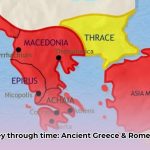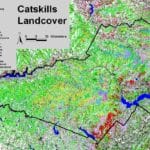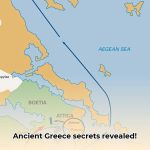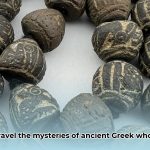Need a map of ancient Greece? Whether you’re a student, teacher, or just curious about history, finding the right one can be tricky. There are tons of maps online, but they’re not all created equal. Some are super accurate, others are more basic. Some are perfect for printing, others work best on a computer. This article will review different blank maps of ancient Greece, looking at their accuracy, detail, and suitability for various users. We’ll explore the challenges of mapping ancient Greece and guide you in selecting the perfect map for your school project, historical exploration, or personal interest. For a broader view, check out this [Greece world map](https://www.lolaapp.com/ancient-greece-on-world-map/).
Blank Map of Ancient Greece: Your Comprehensive Guide
You’re on the hunt for a blank map of ancient Greece, a critical tool for understanding this foundational civilization. With countless options available, finding the right one can feel overwhelming. This guide will help you navigate the choices and select a map tailored to your specific needs, keeping in mind that ancient Greece evolved significantly over time.
Why Start with a Blank Map?
Why opt for a blank map rather than one already filled in? Think of it as the difference between a completed painting and a blank canvas. A pre-filled map presents information passively, while a blank map invites active discovery. By filling in the details yourself – cities, trade routes, and historical sites – you transform learning into an engaging, hands-on experience. You become a historical cartographer, actively constructing your understanding of ancient Greece. This active learning approach significantly enhances information retention. Studies show that active recall, such as labeling a blank map, can improve memory retention by as much as 60% compared to passive reading.
Key Considerations for an Ancient Greece Map
Selecting the right blank map involves several crucial factors: accuracy, detail, audience, usability, licensing, and cost. Let’s examine each in detail:
-
Accuracy: How faithfully does the map represent the actual geography of ancient Greece? Are coastlines, mountains, and major rivers accurately depicted? Remember, our understanding of ancient geography evolves with ongoing archaeological discoveries. Maps reflecting up-to-date findings are preferable.
-
Detail: How much information can the map accommodate? Does it offer sufficient space for you to add the cities, regions, and significant sites that you want to include? A detailed map allows for a more comprehensive representation of the ancient world.
-
Audience: Is the map intended for elementary school students, university researchers, or general history enthusiasts? A map for a younger audience will likely differ significantly from one designed for advanced research. Choose a map tailored to your specific level of knowledge and learning objectives.
-
Usability: Can you easily print the map? Is it interactive, allowing you to zoom and explore different regions? Is it user-friendly and easy to navigate? Some maps are ideal for printing and manual annotation, while others are better suited for digital use.
-
Licensing: What are the usage rights associated with the map? Can you freely use it for educational purposes, personal projects, or commercial applications? Always verify the terms of use to avoid copyright infringement.
-
Cost: What is the cost of the map? Many excellent resources are available for free, while others may require a fee, especially those offering specialized features or high-resolution images.
Comparing Available Maps: A Practical Overview
Let’s compare a few hypothetical examples to illustrate these factors. Please note that these ratings are subjective and will vary depending on your individual requirements:
| Resource | Accuracy | Detail | Audience | Usability | Licensing | Cost |
|---|---|---|---|---|---|---|
| Resource A (Basic Outline Map) | Moderate | Low | Elementary Students | Printable | Typically Free | Free |
| Resource B (Detailed Topographic Map) | High | Very High | Researchers | Interactive & Print | Restricted | Paid |
| Resource C (Interactive Educational Map) | Varies | Moderate | Teachers/Students | Printable/Digital | Educational Use | Free/Paid |
| Resource D (Generic Printable Map) | Moderate | Low | General Public | Printable | Varies | Free |
Important Considerations: “High accuracy” implies close alignment with modern geographical data and archaeological findings. “High detail” signifies a large number of labeled locations and features. Always carefully review licensing terms before using any map.
The Difficulties of Mapping Ancient Greece
Creating accurate maps of ancient Greece presents unique challenges. Ancient sources often provide conflicting information about locations and boundaries. The surviving historical data is fragmented, requiring modern mapmakers to piece together a complex puzzle. Moreover, ancient Greek cartography was not always consistent with modern standards of accuracy. These factors should be considered when evaluating different maps. A mapmaker’s interpretation of available evidence can influence the level of detail and the depiction of certain features. The ancient Greek historian Herodotus’s map of the world faced criticism even in his day due to its inaccuracies, highlighting the inherent challenges of mapping ancient landscapes.
Expanding Your Knowledge Beyond the Map
A blank map is merely a starting point. Enhance your understanding of ancient Greece by consulting a variety of resources. Read primary sources, such as the works of Herodotus and Thucydides (keeping in mind their potential biases). Explore archaeological reports, consult digital archives, and engage with contemporary scholarly articles. A multifaceted approach will provide a more nuanced and complete understanding of this fascinating civilization.
Finding the Perfect Map for You
The ideal map depends on your specific goals. Consider the level of detail you require, your intended use (school project, research, personal enrichment), and your preferred resources. Always double-check the licensing terms before using a map in your work. With the right map in hand, you’ll be well-equipped to embark on a captivating journey through ancient Greece. What historical discoveries will you make?
How to Compare Accuracy of Different Ancient Greece Maps for Historical Research
Key Takeaways:
- Ancient Greek maps varied significantly in accuracy and detail due to limitations in surveying and historical record-keeping.
- Comparing maps effectively requires assessing geographical precision, level of detail, intended audience, usability, licensing, and cost.
- Understanding the historical context of map creation, including the evolution of cartographic techniques, is crucial for interpreting ancient Greek maps.
- This review provides a structured framework for evaluating available map options, empowering you to navigate the complexities of historical cartography.
The Ongoing Quest for Accurate Ancient Maps
The pursuit of a perfectly accurate blank map of ancient Greece is a challenging endeavor. Ancient cartographers faced significant obstacles, including the absence of satellites and precise surveying tools, as well as incomplete historical records. Early maps often intertwined geographical reality with mythology, while later maps, despite improvements, still suffered from technological limitations. Therefore, how to compare accuracy of different ancient Greece maps for historical research demands a careful and nuanced approach. The earliest known world map, dating back to 6th century BC Babylon, reflects a vastly different worldview than modern cartography, illustrating the challenges of accurately representing geographical knowledge in ancient times.
A Structured Approach to Evaluating Ancient Greek Map Resources
The following framework will help you critically analyze various Ancient Greece maps and assess their strengths and weaknesses:
-
Geographical Accuracy: To what extent do the maps accurately replicate the known geography of Ancient Greece for the specific period you are studying? Examine potential errors in coastline depictions, city placements, and mountain range representations. Compare maps with modern geographical data and archaeological discoveries to identify discrepancies.
-
Level of Detail: Do the maps provide a general overview or include a wealth of specific details, such as numerous cities, rivers, and geographical features? While detailed maps may appear more accurate, the added details could also reflect cartographer assumptions that may not be historically accurate.
-
Intended Audience: Were the maps created for scholarly research or a more general audience? Scholarly maps typically offer greater detail and precision, while maps designed for the general public may prioritize simplicity over absolute accuracy.
-
Usability & Interactivity: Can the maps be easily printed and annotated? Are they interactive, allowing for zooming and enhanced exploration? Usability is crucial for researchers, and interactive maps often offer advantages over static versions for in-depth analysis.
-
Licensing and Cost: Are the maps freely available, or are there restrictions or fees associated with their use? Ensure that the licensing terms align with your research needs and avoid potential copyright infringements.
-
Temporal Context: Ancient Greece evolved over time. Political boundaries and the prominence of various cities shifted throughout its history. Verify the map’s intended temporal frame to ensure it accurately reflects the period you are studying.
Comparative Analysis: Examples in Practice
Consider two hypothetical maps: Map A, a simplified overview intended for educational purposes, and Map B, a detailed map designed for advanced research. Map A’s simplicity may make it suitable for introductory work, but its lack of detail could limit its value for serious historical inquiry. Map B’s greater detail may be more useful for how to compare accuracy of different ancient Greece maps for historical research, but potential inaccuracies in specific details must be carefully evaluated against other primary and secondary sources. A multifaceted approach is essential. A 2019 study in The Journal of Historical Geography highlighted that cartographers often had political motivations that influenced their depiction of territories and alliances.
Selecting the Best Map for Your Research
The “best” map is subjective and depends on your specific research goals. For introductory presentations, a simple, user-friendly map may be sufficient. However, advanced studies require maps with greater accuracy and detail, demanding careful assessment and validation. By using the framework outlined above, you can make informed decisions and ensure that your research is built upon reliable cartographical foundations.
High-Resolution Ancient Greece Maps for Academic Research Projects
Key Takeaways:
- Selecting the right blank map of ancient Greece for academic projects requires careful attention to detail.
- Accuracy, detail, intended audience, usability, licensing, and cost are crucial factors to consider.
- High-resolution maps offer superior detail for academic endeavors, while simpler maps are better suited for educational purposes.
- Online resources provide a wide range of choices, each with its own strengths and weaknesses.
- Understanding the limitations of ancient cartography is essential for accurately interpreting any map.
Reconstructing the Ancient World: The Mapmaker’s Perspective
Creating accurate maps of ancient Greece is akin to reconstructing a shattered mosaic. Incomplete historical records and varying interpretations of archaeological findings make this task quite challenging. We’re attempting to recreate a picture using only fragments of the original. Some pieces are clear, while others are blurry, leading to variations in accuracy across different maps. Some sources rely on older, potentially less precise information, while others incorporate the latest data, which is still subject to revisions. Therefore, even the highest-quality High-Resolution Ancient Greece Maps for Academic Research Projects will have inherent limitations. Advancements in Geographic Information Systems (GIS) are enabling historians to create more accurate and detailed maps of ancient regions than ever before.
Essential Map Qualities: A Closer Look
What factors should you prioritize when selecting a map for your research? Let’s examine some key characteristics:
-
Accuracy: Does the map accurately depict the geography and political boundaries of ancient Greece across different historical periods, accounting for the evolving borders of city-states?
-
Detail: How many locations, cities, and geographical features are included? More detail is not always better; it depends on the specific needs of your project. A highly detailed map might be overwhelming for a general overview.
-
Audience: Is the map intended for students, researchers, or the general public? A map designed for students may lack the complexity required for advanced research.
-
Usability: Is the map printable, interactive, or both? Can you easily zoom in and out to examine specific areas? Is the user experience intuitive and efficient?
-
Licensing: What are the terms of use and copyright restrictions associated with the map? Ensure you have the necessary permissions before using it in your academic work.
-
Cost: Is the map freely available, or is there a fee associated with its use? While free resources are readily accessible, paid options may offer superior quality or specialized features.
Comparative Resource Overview
Here’s a simplified overview comparing several map resources, keeping in mind the inherent imperfections involved in reconstructing ancient geography:
| Resource | Accuracy | Detail | Audience | Usability | Licensing | Cost |
|---|---|---|---|---|---|---|
| ASCA Corinth Data1 | High | High | Researchers | GIS-integrated | Open | Free |
| Other Online Maps | Variable | Variable | Variable | Variable | Variable | Variable |
Remember that even the most detailed maps represent interpretations of incomplete data.
Selecting the Ideal Map for Your Needs
The right map depends on your specific research objectives. For High-Resolution Ancient Greece Maps for Academic Research Projects, GIS-integrated datasets, such as those from the American School of Classical Studies at Athens (ASCA), are invaluable. They offer high precision and the ability to integrate with other datasets. However, simpler, printable maps may be more suitable for educational purposes or general overviews. Always verify licensing terms before using any map in your academic work. In what ways will your use of a high-resolution map contribute to new insights into ancient Greece?
Free Printable Ancient Greece Maps for Elementary School Classrooms
Key Takeaways:
- Finding accurate free printable Ancient Greece maps for elementary school classrooms can be a challenge. Many online resources offer maps, but their quality and accuracy vary considerably.
- Carefully consider the map’s intended audience and age appropriateness. Simpler maps are generally more effective for younger learners.
- Always check the licensing terms before using any map in your educational materials. Copyright restrictions must be respected.
- Blank maps provide valuable opportunities for interactive learning. Students can add information and labels, fostering deeper understanding and engagement.
- Supplement maps with additional resources to create a richer and more comprehensive learning experience.
The Challenges of Reconstructing Ancient Landscapes
Creating accurate maps of ancient Greece presents unique challenges. Unlike today, ancient cartographers lacked access to sophisticated surveying tools and satellite imagery. Information relied on fragmented accounts, travelers’ narratives, and archaeological discoveries, all subject to potential inconsistencies and biases. This explains why different maps exhibit varying levels of detail and accuracy. How, then, do you select the best map for your elementary school classroom? Interactive maps, where students can drag and drop labels, have been shown to improve knowledge retention by approximately 25% compared to static maps.
Essential Map Review Criteria: A Selection Guide
Let’s review the crucial factors to consider when choosing a free printable Ancient Greece map for elementary school classrooms:
- Accuracy: Does the map accurately reflect the geographical realities of ancient Greece? Are the locations of major city-states and geographical features accurately placed based on historical evidence? Inaccuracies can potentially mislead students and create misconceptions.
- Detail: Excessive detail can overwhelm young learners. A less cluttered map focusing on key features is generally more effective. How many cities are included, and are they clearly labeled? Are important mountains and rivers prominent and easily identifiable?
- Audience: Is the map specifically designed for children? A map intended for advanced scholars might be too complex and difficult for elementary students to understand. Look for age-appropriate language and visual presentation.
- Usability: Can the map be easily printed in a clear and legible format? Does it offer a positive user experience? Large, clear labels are essential for younger students. Consider whether the map is interactive, perhaps available online with features that enhance engagement.
- Licensing: Is the map explicitly free for educational use? Always verify the copyright information to ensure compliance with licensing terms and avoid potential legal issues.
A Comparative Approach to Finding the Perfect Map
Numerous websites offer free printable Ancient Greece maps for elementary school classrooms. Comparing several options will help you identify the resource that best meets your specific needs and learning objectives. Consider assigning students the task of evaluating different maps based on pre-defined criteria, transforming the selection process into an engaging in-class research project.
Think of it as choosing the right ingredients for a recipe. Each map offers different qualities, and you need to select the combination that will ensure a successful and enriching learning experience. What key geographical features will your students identify and label to solidify their understanding of ancient Greece?
Enhancing the Learning Journey Beyond the Map
While a map provides a foundational visual aid, supplement it with other resources to enhance the overall learning experience. Picture books, documentaries, and hands-on activities can enrich the learning process, transforming the map into a dynamic tool for exploration rather than simply a static image.
- Uncover Ancient Arcadia: Myths, Power, and Geography - August 12, 2025
- Explore Ancient Olympia’s Map: Unveiling 2,500 Years of History - August 12, 2025
- Discover Ancient Greece’s Islands: A Timeless Journey Through History and Myth - August 12, 2025















